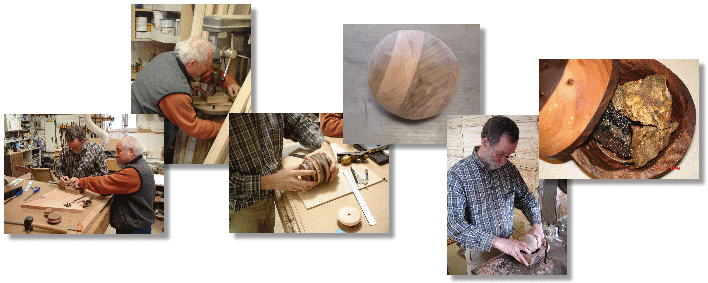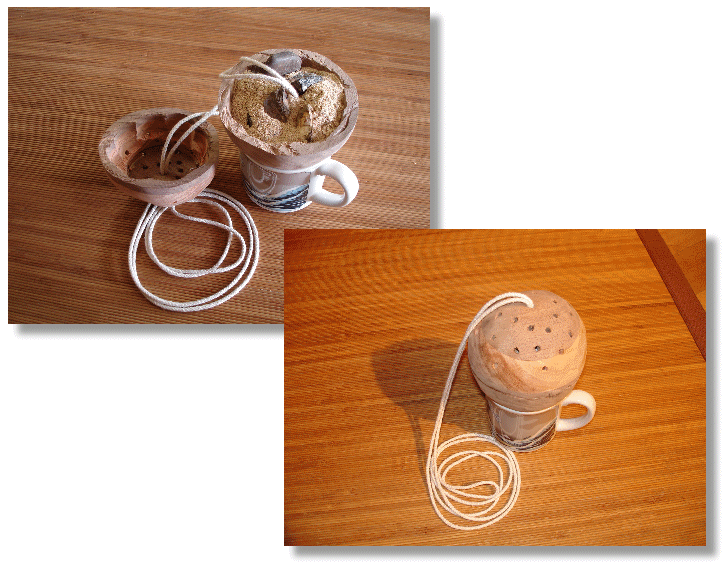I had devised a special urn for Janet’s Celebration of Life Heiau ceremony on Hawai`i and called it her hōkū lele (Hawaiian for “shooting star” or “meteor”). My friends Chris and Nick used their considerable woodworking skills to make my idea a reality. The hōkū lele was a round piece of various hardwoods (mostly walnut), about the size of a grapefruit, that had been cut in half and the center hollowed out. The overall shape was achieved by layering rings of wood and then gluing them together. One half of the sphere was perforated with a couple dozen holes. A cotton string was run through each of the halves, tied off at the base of one half with a long stretch extending beyond the end of the other. Into this wooden sphere were placed as many granite stones from Colorado as would fit. I had selected some stones from Glennwood Canyon and the base of Mount Evans (Idaho Springs). At this point, a float-or-sink test was done to ensure there was enough weight to the hōkū lele so that it would easily sink. It sank well enough.
 |
This is as far as the hōkū lele would be completed before the trip to Hawai`i. The final steps would be completed after arrival on Kaua`i. I wanted to give the TSA folks as few challenges as possible.
Just to be sure the hōkū lele would sink, before the two halves were glued together, the empty space between the stones was filled with sand from Anini Beach. On top of all this were placed a small portion of Janet’s ashes. (The picture below shows just the sand, not Janet’s ashes.) By this stage, the hōkū lele weighed a pretty good amount. By my reckoning, it easily weighed 4 or 5 pounds, thanks to the granite and sand.
Through the center of the sphere a cotton cord was strung and knotted at the base of the bottom half but left free on the top half. The free length was about one meter in length. This is what I would hold on to as I swung the hōkū lele around, gathering momentum so as to sail the hōkū lele far out over the edge of the Heiau and into the Ocean below. Once in the water, the glue would quickly dissolve and release any remaining ashes. Likewise, the cotton cord would degrade fairly rapidly, leaving only the wooden layers to drift out to sea. The picture below shows the finished hōkū lele, ready for the ceremony. It is resting in a coffee mug so that it wouldn’t roll over.
 |
From this point forward, the hōkū lele has a right-side up otherwise Janet’s ashes would spill. For the trip out to the Heiau, the hōkū lele was wrapped in the yoga shirt Janet was wearing when she passed and which covered her urn at home for the past year.
We laughed that the design and workmanship had better be of sufficient style and elegance because if it looked like a salt shaker Janet wouldn’t be very pleased with our effort. I believe we succeeded.
Posted by GPE @ 12:42 pm Comments are off for this post
Tags:

